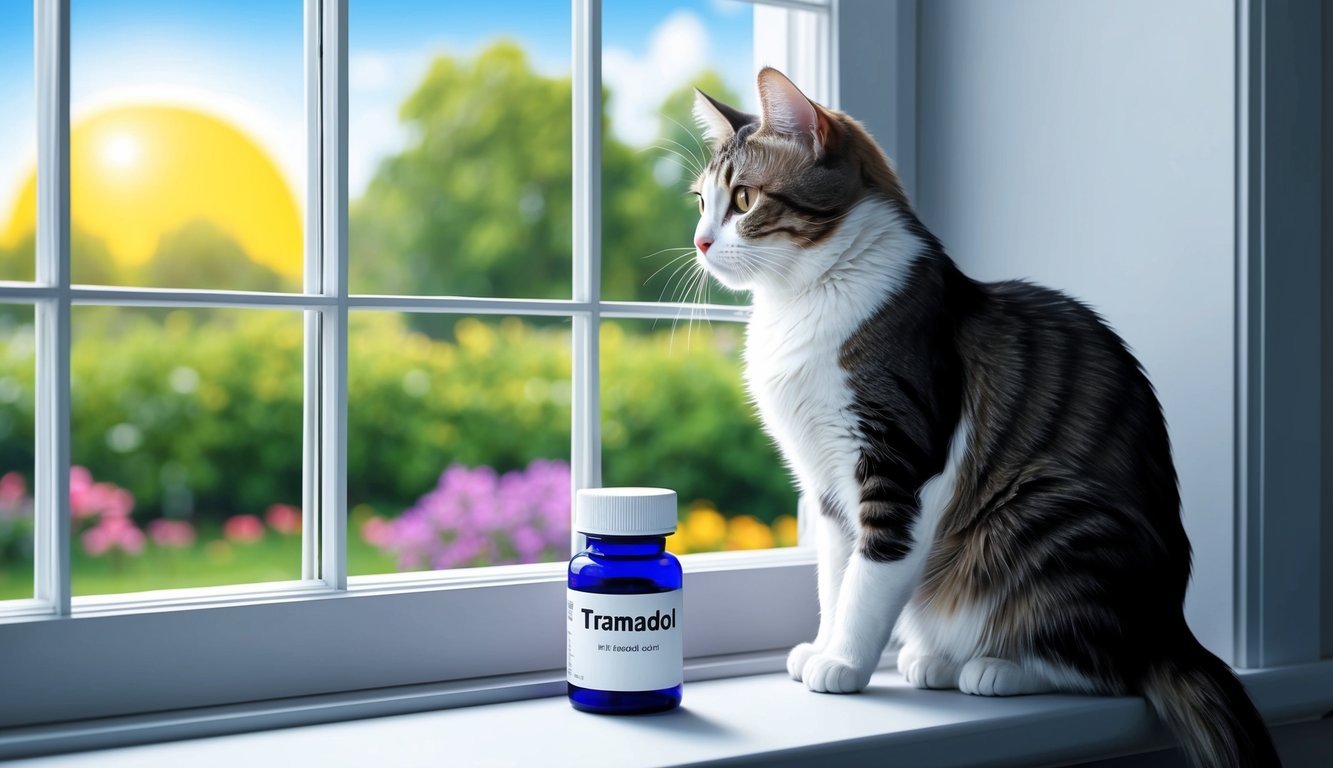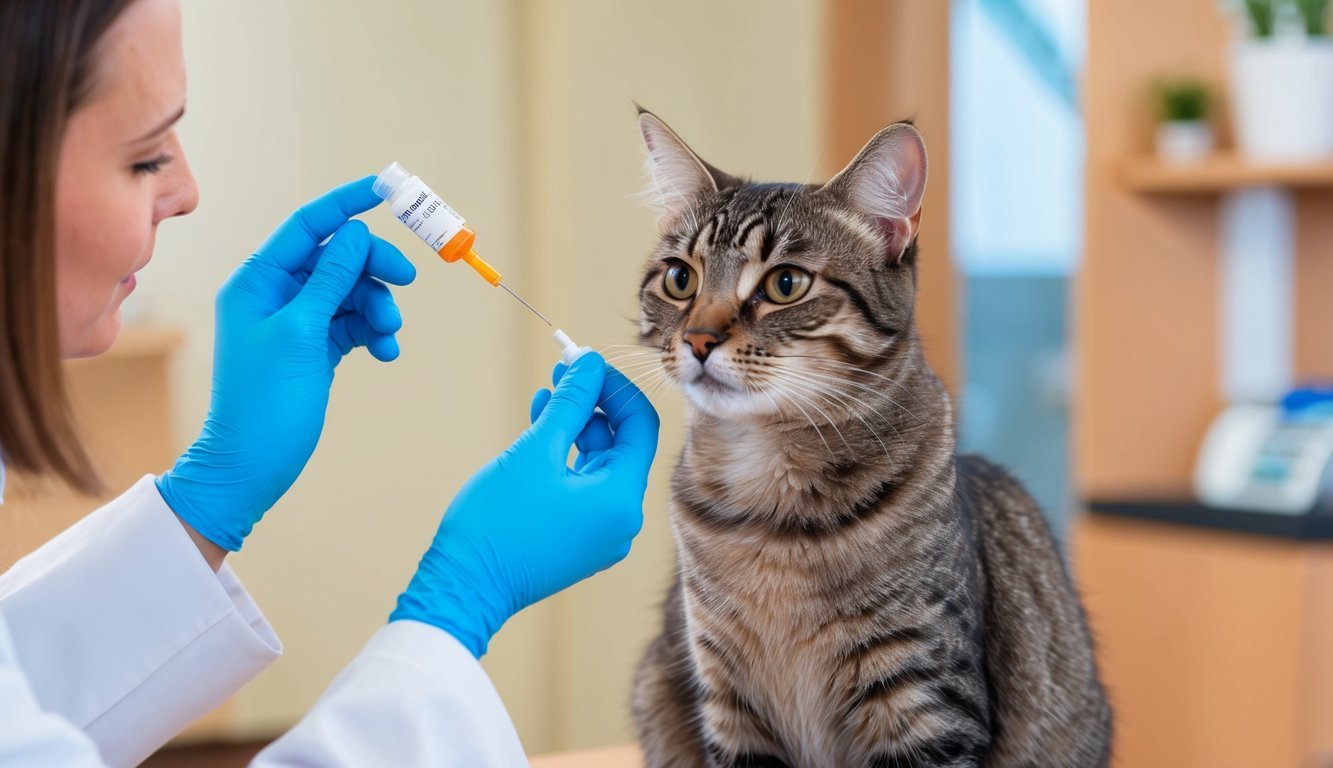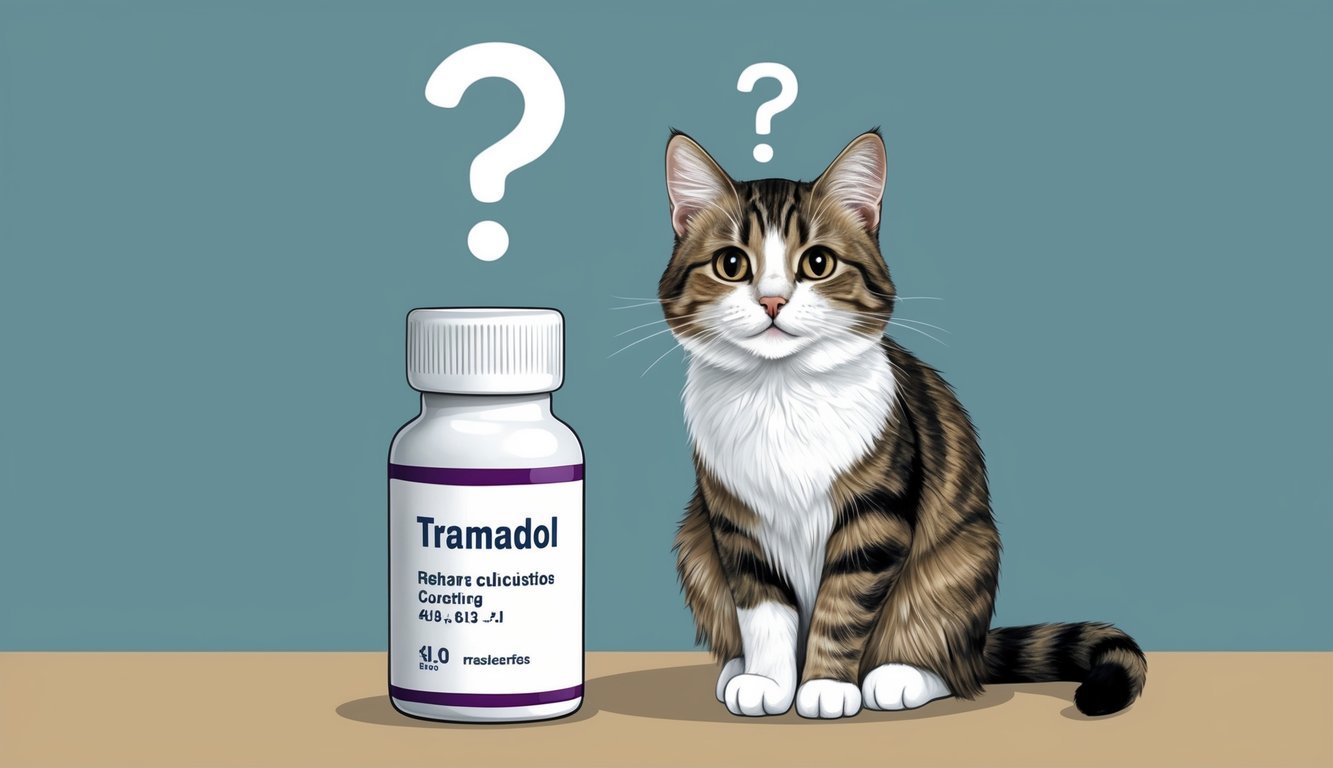Tramadol is a medication often used in veterinary medicine to manage pain in cats.
This versatile opioid can be effective for both acute and chronic pain relief.
It offers your cat comfort during recovery or ongoing health issues.
Knowing when and how to use tramadol can greatly enhance your cat’s quality of life, making it an important topic for pet owners to explore.
As with any medication, understanding the benefits and potential risks associated with tramadol is essential.
Your veterinarian can provide guidance tailored to your cat’s specific needs, ensuring that you make informed decisions about their pain management.
With the right information, you can help your feline friend feel better while navigating the complexities of medication use.
Whether your cat is recovering from surgery or dealing with long-term pain, tramadol may be a viable option to discuss with your vet.
With the right approach, you can support your cat’s journey toward improved health and comfort.
Key Takeaways
- Tramadol is commonly prescribed for managing pain in cats.
- Always consult your veterinarian before administering any medication.
- Understanding tramadol is crucial for effective pain relief in your cat.
Understanding Tramadol
Tramadol is a synthetic opioid commonly used as a pain reliever in both humans and animals.
This section explores what tramadol is, its role in veterinary medicine, and how it works to manage pain in cats and other pets.
What Is Tramadol?
Tramadol is a synthetic opioid analgesic that helps relieve pain.
Unlike traditional opioids like morphine, tramadol works through dual mechanisms.
It binds to mu-opioid receptors and inhibits the reuptake of norepinephrine and serotonin.
Because of its unique action, it can provide pain relief without the same level of sedation or risk of addiction associated with stronger opioids.
While tramadol is FDA-approved for human use, its application in pets is considered off-label.
Still, veterinarians often prescribe it for managing pain in cats and dogs.
Tramadol in Veterinary Medicine
In veterinary practice, tramadol is frequently used for managing acute and chronic pain in cats.
It is particularly useful after surgery or for conditions like arthritis.
The typical dosage for cats ranges from 1 to 4 mg/kg, administered orally every 8 to 12 hours.
It’s important to note that tramadol is often used in combination with other pain medications to enhance its effectiveness.
Although cats metabolize tramadol differently than dogs, it can still significantly improve their quality of life when managed correctly.
How Tramadol Works
Tramadol acts mainly on the central nervous system (CNS) to alleviate pain.
When administered, it binds to specific receptors in the brain to reduce the perception of pain.
This binding not only decreases pain signals but also affects mood and emotional response to discomfort.
Additionally, tramadol’s ability to inhibit the reuptake of neurotransmitters like norepinephrine and serotonin can enhance its pain-relieving properties.
This mechanism makes tramadol effective for a variety of pain conditions, offering a unique option for your pet.
Always consult your veterinarian for the appropriate dosage and potential side effects when using tramadol for cats.
Benefits of Tramadol for Cats
Tramadol serves as a valuable pain reliever for cats, especially for those dealing with chronic pain conditions.
It can be particularly beneficial for managing osteoarthritis pain and provides an alternative to more potent opioids like morphine.
Pain Management
For cats experiencing pain, tramadol can be an effective option.
It works by binding to the mu-opioid receptors, helping to alleviate discomfort.
- Application: Veterinarians often prescribe it after surgery or for ongoing pain management.
- Dosing: Recommended doses range from 1 to 4 mg/kg, given every 8 to 12 hours.
This synthetic opioid has a unique benefit of providing analgesia in cats without the severe side effects associated with stronger opioids.
Many cat owners find it easier to manage their pets’ pain with tramadol, improving their overall quality of life.
Comparison with Other Opioids
When comparing tramadol to stronger opioids, a few distinctions arise.
While morphine is a powerful pain reliever, it may pose more risks for side effects.
- Tramadol Advantages:
- Lower risk of respiratory depression.
- Can be used in conjunction with other pain medications.
Some studies suggest that tramadol may not be as effective in dogs but serves a purpose in feline pain management when used appropriately.
It’s important to discuss with your veterinarian to determine the best pain management strategy tailored to your cat’s specific needs.
Risks and Side Effects

Using tramadol for cats can be beneficial, but it’s important to be aware of the potential risks and side effects that can arise.
Monitoring your cat for adverse reactions is crucial, especially if they have underlying health conditions.
Common Side Effects
When your cat takes tramadol, some common side effects may occur.
These can include:
- Sedation: Increased drowsiness may be noticeable. Your cat might seem more lethargic than usual.
- Constipation: Changes in bowel movements can happen, so keep an eye on your cat’s litter box habits.
- Vomiting: Some cats experience nausea, which can lead to vomiting.
While many cats tolerate tramadol well, it’s essential to watch for these symptoms and consult your veterinarian if they persist.
If your cat shows signs of severe sedation or changes in behavior, it may be time to reevaluate their medication.
Serious Concerns
In some situations, tramadol can lead to more severe side effects, especially in cats with specific health issues.
For instance:
- Overdose: Administering too much tramadol can cause serious complications, including lethargy, respiratory issues, or seizures.
- Adverse effects in kidney disease: Cats with kidney problems may not metabolize the drug effectively, raising the risk of toxicity.
- Seizure disorders: If your cat has a history of seizures, tramadol could potentially exacerbate this condition.
Always inform your veterinarian of any pre-existing conditions your cat might have.
Knowing these serious risks ensures that you manage your cat’s pain safely and effectively.
Dosage and Administration
When considering tramadol for your cat, it’s essential to understand the proper dosage and how to administer the medication effectively.
Additionally, being aware of potential overdose symptoms will prepare you for any emergencies.
Determining the Proper Dosage
The dosage of tramadol for cats typically ranges from 1 to 4 mg/kg of body weight.
Most veterinarians recommend starting at 2 mg/kg, given every 12 hours.
For some cases, a higher dose may be necessary, but this should always be guided by veterinary care.
Dosage Guidelines:
- Initial Dose: 2 mg/kg every 12 hours
- Adjustment: May increase to 3-4 mg/kg based on pain level
- Maximum Dose: Should not exceed 50 mg/kg per day
Consult your vet for tailored recommendations, as each cat’s response can vary.
Administering Tramadol to Cats
Tramadol is available in different forms, including capsules, tablets, and liquid.
If your cat is averse to taking pills, the liquid formulation might be easier for you to administer.
Here are some tips for administering tramadol:
- With Food: Giving tramadol with food can help mask the taste and ease stomach irritation.
- Follow Instructions: Always follow your veterinarian’s instructions regarding frequency and quantity.
- Consistency: Try to administer the medication at the same times each day to maintain steady pain relief.
Ensure that your cat swallows the medication completely.
You might need to use a pill pocket or a similar product to facilitate this.
What to Do in Case of Overdose
If you suspect an overdose, it’s crucial to act quickly.
Symptoms of tramadol overdose in cats may include:
- Vomiting
- Lethargy
- Tremors or seizures
- Difficulty breathing
In case of overdose, seek emergency veterinary care immediately.
Share the details of the dosage and time of administration with the veterinarian.
They may provide supportive care or antidotes as needed.
Always keep tramadol stored securely, as it is a controlled substance.
Special Considerations for Cats

When considering tramadol for your feline friend, it’s essential to keep their unique health needs in mind.
Cats have different responses to medications compared to dogs and humans, especially when dealing with chronic conditions.
Tramadol for Cats with Chronic Conditions
Tramadol can be beneficial for cats suffering from chronic conditions like osteoarthritis or kidney disease.
In these cases, your veterinarian may recommend a dosage of 1 to 4 mg/kg given orally every 8 to 12 hours.
It’s crucial to monitor your cat closely.
Conditions such as kidney disease can affect how tramadol is metabolized.
Increased blood levels of the drug may lead to side effects.
Always consult your vet before starting or adjusting the dose, as they can provide tailored advice based on your cat’s specific health status.
Cats’ Palatability Issues
One of the challenges with tramadol in cats is its bitter taste.
This can make it difficult for you to administer in tablet or capsule form.
Many cats may refuse to take their medications due to the unpleasant flavor.
To improve acceptance, you might consider using a liquid formulation, if available.
Compounding pharmacies can create specially flavored options that may appeal more to your cat’s palate.
Additionally, pairing the medication with a favorite treat can help ensure your cat receives their pain management without a struggle.
Alternative Treatments and Pain Relief
When managing pain in cats, especially conditions like osteoarthritis, it’s essential to explore various treatment options.
Beyond traditional medications like tramadol, alternative therapies can provide significant relief.
Non-Opioid Options
Non-opioid pain relievers can be effective for managing osteoarthritis pain in cats.
Common choices include nonsteroidal anti-inflammatory drugs (NSAIDs).
These medications help reduce inflammation and alleviate pain.
The veterinary care team can guide you on suitable options based on your cat’s specific needs.
Additionally, joint supplements that contain ingredients like glucosamine and chondroitin sulfate support joint health and mobility.
These can be given safely alongside other pain relievers.
Regular monitoring by your veterinarian ensures you’re choosing the best combination for your cat’s comfort.
Holistic and Supportive Therapies
Holistic therapies can complement traditional pain management strategies. Acupuncture is gaining attention in veterinary medicine for its potential to relieve pain and improve your cat’s quality of life.
This technique may help stimulate the body’s natural healing processes.
Physical therapy is another effective strategy to enhance mobility and strength.
Simple exercises or range-of-motion activities can be beneficial.
Always consult with your veterinarian before starting any new treatment.
By combining these therapies, you can develop a comprehensive approach tailored to your cat’s unique situation.
Caring for a Cat on Tramadol
When your cat is prescribed tramadol, understanding how to care for them is crucial.
This includes keeping an eye on side effects and being aware of potential withdrawal symptoms, ensuring your cat remains comfortable and safe during their treatment.
Monitoring for Side Effects
While tramadol can help manage your cat’s pain, it’s important to monitor for side effects.
Common side effects include drowsiness, vomiting, and agitation.
- Drowsiness: Observe if your cat appears lethargic or less active than usual. Depending on their condition, some drowsiness may be expected.
- Vomiting: If your cat vomits more than once, contact your veterinarian as this can indicate an adverse reaction.
- Agitation: Watch for signs of restlessness or discomfort. If your cat seems unusually anxious, reach out to your vet.
Create a simple log to track your cat’s behavior, noting any changes that occur after giving tramadol.
This can help your veterinarian make informed decisions about your cat’s care.
Managing Withdrawal Symptoms
If your cat has been on tramadol for a while, you must manage withdrawal symptoms.
Gradually tapering the medication, rather than stopping abruptly, can prevent discomfort.
Signs of withdrawal may include:
- Changes in behavior
- Increased pain levels
- Irritability or distress
Talk to your veterinarian about the best approach for tapering the medication.
They may suggest alternative pain management strategies or provide specific instructions tailored to your cat’s needs.
Staying attentive to any changes during this period will help ensure your cat remains as comfortable as possible while transitioning off tramadol.
Frequently Asked Questions

Many cat owners have questions about tramadol, especially regarding its administration and potential effects.
Here are some common inquiries to help guide you.
What are the potential side effects of using tramadol in cats?
Tramadol may cause several side effects in cats, such as drowsiness, constipation, or gastrointestinal upset.
In some instances, it can also lead to changes in heart rate or respiratory depression.
Always monitor your cat for any unusual behavior after starting tramadol to ensure they are adjusting well.
How should tramadol be administered to a cat?
Tramadol is usually given orally, in tablet form.
It’s essential to follow your veterinarian’s instructions regarding dosing and frequency.
You can hide the tablet in food or use a pill pocket to make it easier for your cat to take.
What is the appropriate dosage of tramadol for cats?
Dosage can vary based on your cat’s specific needs and health condition.
Common recommendations range from 1 to 4 mg/kg every 8 to 12 hours.
Your veterinarian will determine the best dosage based on your cat’s situation.
Can tramadol used for cats cause foaming at the mouth?
Foaming at the mouth can occur, but it’s not a common side effect associated with tramadol.
If you notice this happening, it’s important to contact your veterinarian, as it may indicate a reaction or that your cat is having difficulty swallowing the medication.
Is it safe to give my cat both tramadol and gabapentin?
Yes, many veterinarians prescribe tramadol and gabapentin together for managing pain effectively.
This combination can provide a more comprehensive pain relief strategy.
Always consult your vet before starting or combining medications to ensure safety and effectiveness.
Are the tramadol dosages for dogs and cats different?
Yes, the dosages differ between dogs and cats.
Cats typically require a lower dose due to differences in metabolism and how their bodies process tramadol.
Always adhere to your vet’s recommendations tailored for your cat’s size and health status.

